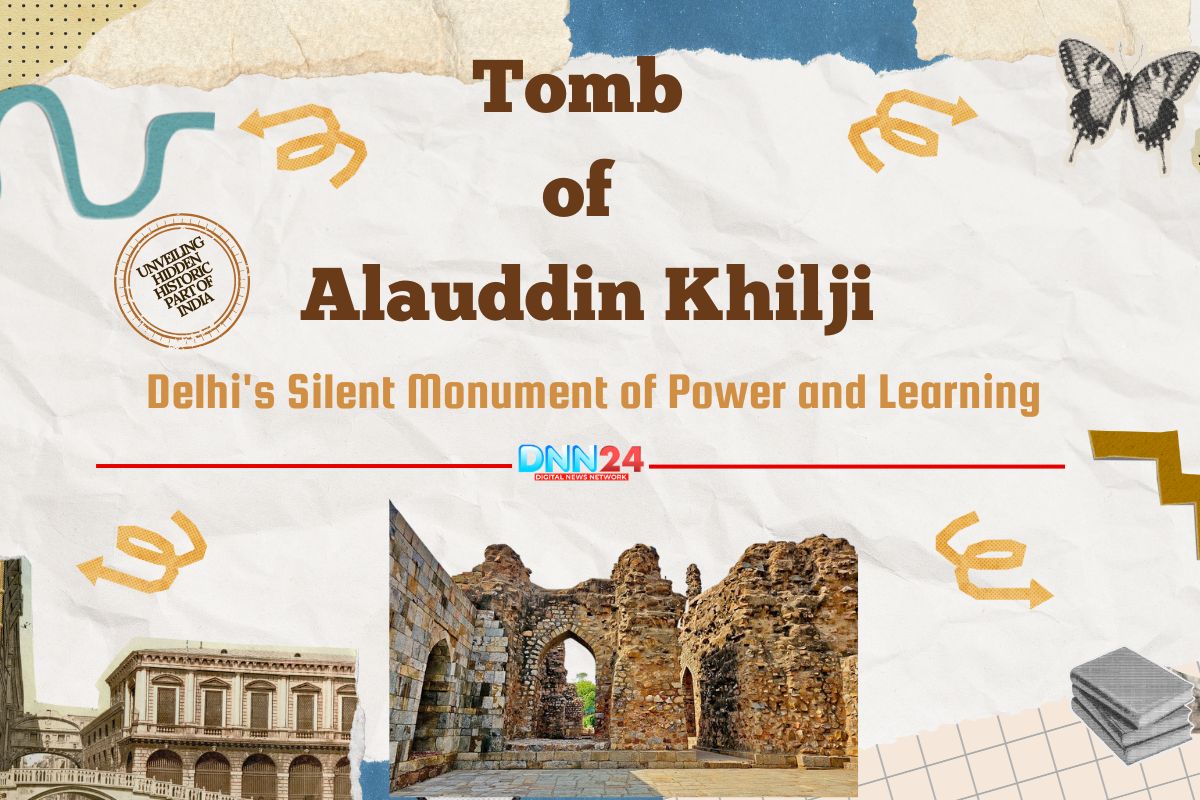The Tomb of Alauddin Khilji sits quietly within the sprawling Qutb Minar complex in Delhi, a structure that speaks more through its silence than through grandeur. Built in 1315, this monument marked the final resting place of one of medieval India’s most formidable sultans, Alauddin Khilji, who ruled the Delhi Sultanate from 1296 to 1316. During his reign, Khilji expanded his empire from Bengal in the east to regions beyond the Hindu Kush in the north, establishing himself as a military genius and administrative reformer. His capital city, Siri, became a symbol of his ambition and power.
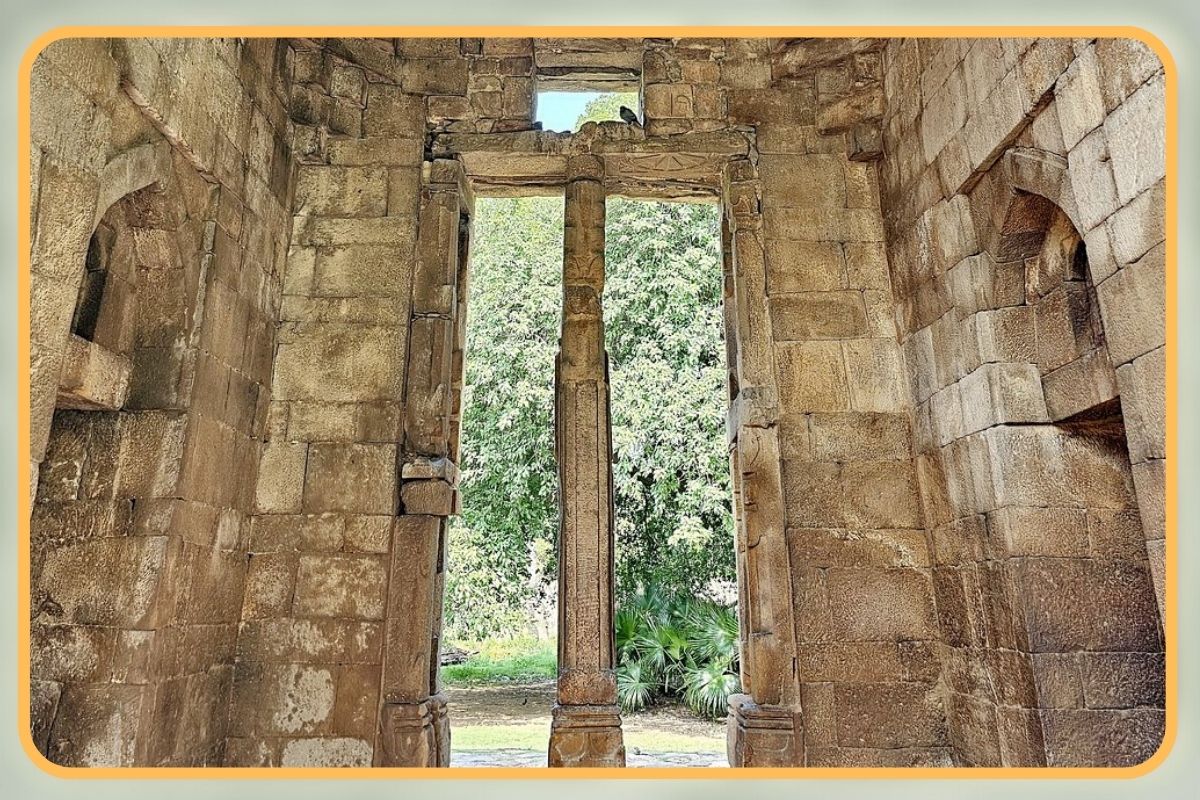
Yet when death claimed him, his tomb became something entirely different from the lavish structures built by later Mughal emperors. This was no ordinary burial ground. The tomb was attached to a madrasa, making it the first madrasa-tomb complex in India. The concept, possibly borrowed from Seljuk architecture in Central Asia, combined spiritual worship with intellectual pursuits. Students studied in rooms adjacent to where their patron sultan would eternally rest. The design reflected Khilji’s understanding that power without knowledge fades, and that learning outlives conquest. Today, visitors encounter a structure stripped of its former glory, yet rich in historical significance, standing as a reminder of how even the mightiest empires return to dust.
Architecture That Blends Simplicity With Purpose
The tomb’s architecture surprises those expecting Mughal extravagance. There are no intricate marble inlays, no delicate jali screens, no verses from the Quran carved in flowing calligraphy. Instead, thick limestone and rubble walls define the structure, weathered by seven centuries of monsoons and Delhi summers. The most striking feature is also an absence. The dome that once crowned the tomb has vanished completely, leaving the central chamber open to the sky. Rain falls directly onto the grave now, and birds fly freely overhead. The tomb itself measures just 7 feet by 4 feet, housed within a modest central room of 16 feet by 12 feet. No inscriptions identify the occupant.
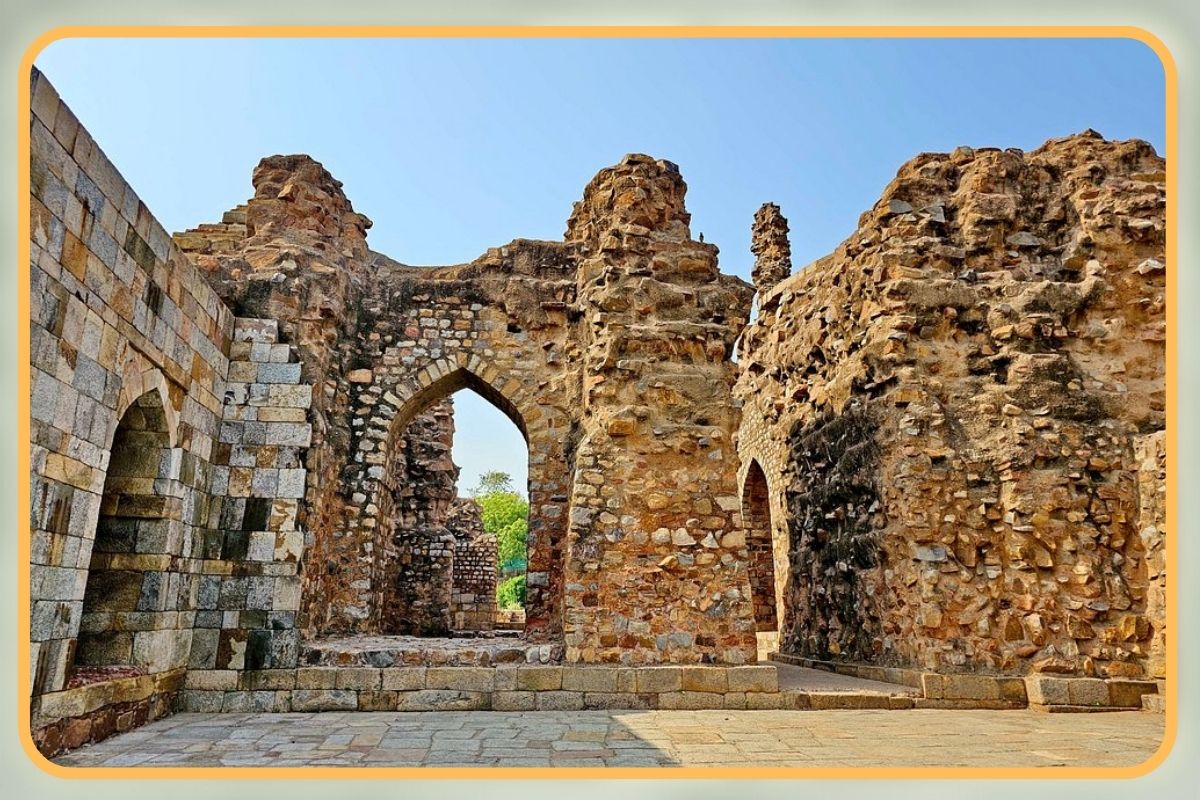
No headstone proclaims his victories. This starkness raises questions. Did Khilji plan this humility himself, or did time erase the ornaments that once existed? The madrasa portion consisted of seven small cells and two domed chambers in the western wing, where scholars lived and taught. Three additional rooms in the southern section served as classrooms. Corbelled arches and sharp-edged stonework reveal the craftsmanship of the era. The structure was functional rather than decorative, built to serve students and Sufi mystics who gathered here for learning and spiritual guidance. Walking through the corridors today, one can almost hear the echoes of theological debates and recitations that once filled these spaces.
From Sacred Site to Modern Curiosity
Centuries have transformed how people interact with Alauddin Khilji’s tomb. In earlier times, pilgrims visited believing the site carried the blessings of Sufi saints. They tied threads to the structure while making wishes, treating it as a dargah rather than merely a royal grave. The distinction between tomb and shrine blurred as spiritual traditions embraced the site. Firoz Shah Tughluq, who ruled Delhi decades after the Khilji dynasty, ordered repairs to the structure, recognising its historical importance. Later, the Archaeological Survey of India took responsibility for preservation, conducting restoration work to prevent complete collapse. Modern conservation teams use traditional building materials, mixing lime and sand to repair damaged sections.
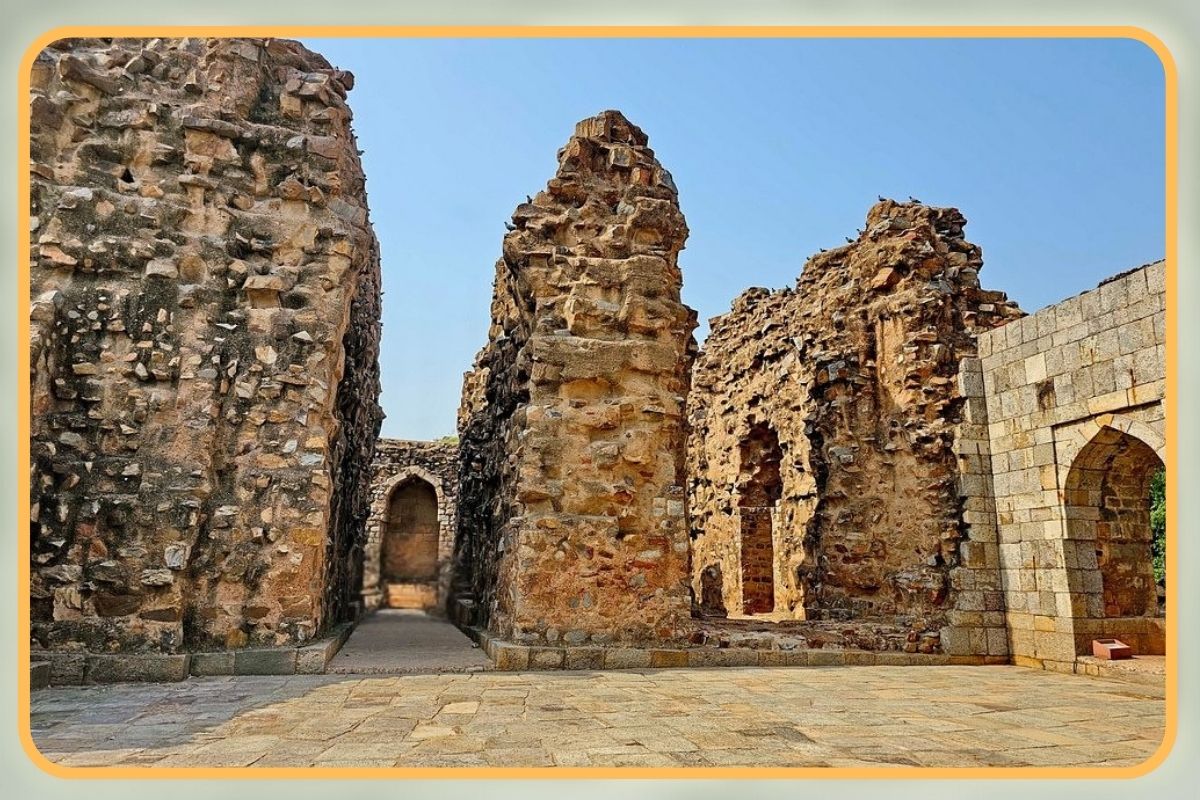
They work to stabilise walls and protect what remains of the original plasterwork. Yet, despite these efforts, the tomb cannot be restored to its original state. The missing dome will not be rebuilt. The faded inscriptions, if they ever existed, remain lost. What visitors see today is a structure that has come to terms with its incompleteness.
Interestingly, the 2018 Bollywood film Padmaavat brought renewed attention to Alauddin Khilji, although the movie’s portrayal mixed historical accuracy with creative license. Young people who may have never heard of the sultan now visit his tomb, curious about the man behind the controversial film character. Some come for selfies, others to understand the real history. The tomb has become a crossroads where popular culture meets genuine heritage.
Why This Monument Still Matters to India
The tomb of Alauddin Khilji holds relevance beyond its historical value. It represents how India preserves even those rulers whose legacies remain complicated. Khilji was ruthless in battle, ordering brutal conquests and crushing rebellions with merciless efficiency. He reformed the economy but implemented harsh price controls. He patronised scholars yet maintained strict authoritarian rule. His tomb neither glorifies nor condemns him.
It simply exists, allowing each visitor to form their own judgments. As part of the UNESCO World Heritage site of the Qutb Complex, the tomb receives legal protection and periodic maintenance. Conservation work focuses on structural stability rather than reconstruction, respecting the principle that historical monuments should show their age honestly. The approach differs from restoration projects that aim to restore old structures to their original appearance.
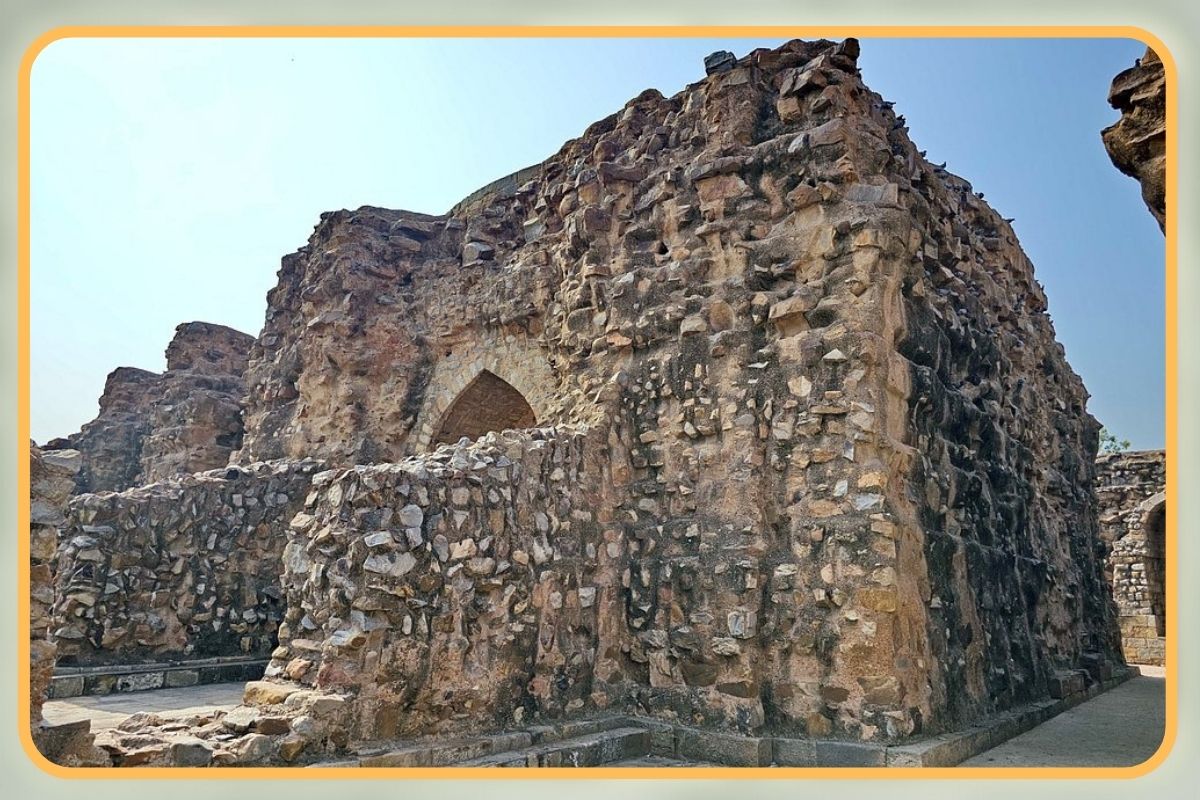
Here, the cracks and weathering are part of the story. School groups visit regularly, with teachers using the site to explain the architecture of the sultanate period and medieval Indian history, and college students studying archaeology measure and photograph details for their research. Tourists following heritage trails often include it in their visits to the Qutb Complex.
Residents sometimes bring elderly family members who remember when the area was less crowded, when you could sit quietly in the chamber and feel the weight of centuries. The tomb teaches a lesson about impermanence. No matter how powerful you become, how many territories you conquer, how much gold fills your treasury, eventually you occupy a small space beneath stone and sky. Delhi, built and rebuilt by successive rulers, remembers them all, but the city itself remains the true survivor.
Final Thoughts on Stone, Sky, and Memory
Standing inside the roofless central chamber of Alauddin Khilji’s tomb creates a unique and unusual feeling. The absent dome means nothing separates you from the weather, from passing clouds, from the flight of parakeets that nest in wall crevices. Guards occasionally remind visitors to show respect, discouraging people from climbing on the grave platform despite its current state of informality. The request seems reasonable; regardless of how history judges Khilji, this remains a burial site deserving basic dignity. The tomb’s most outstanding quality might be its honesty. It does not demand awe through size or beauty.
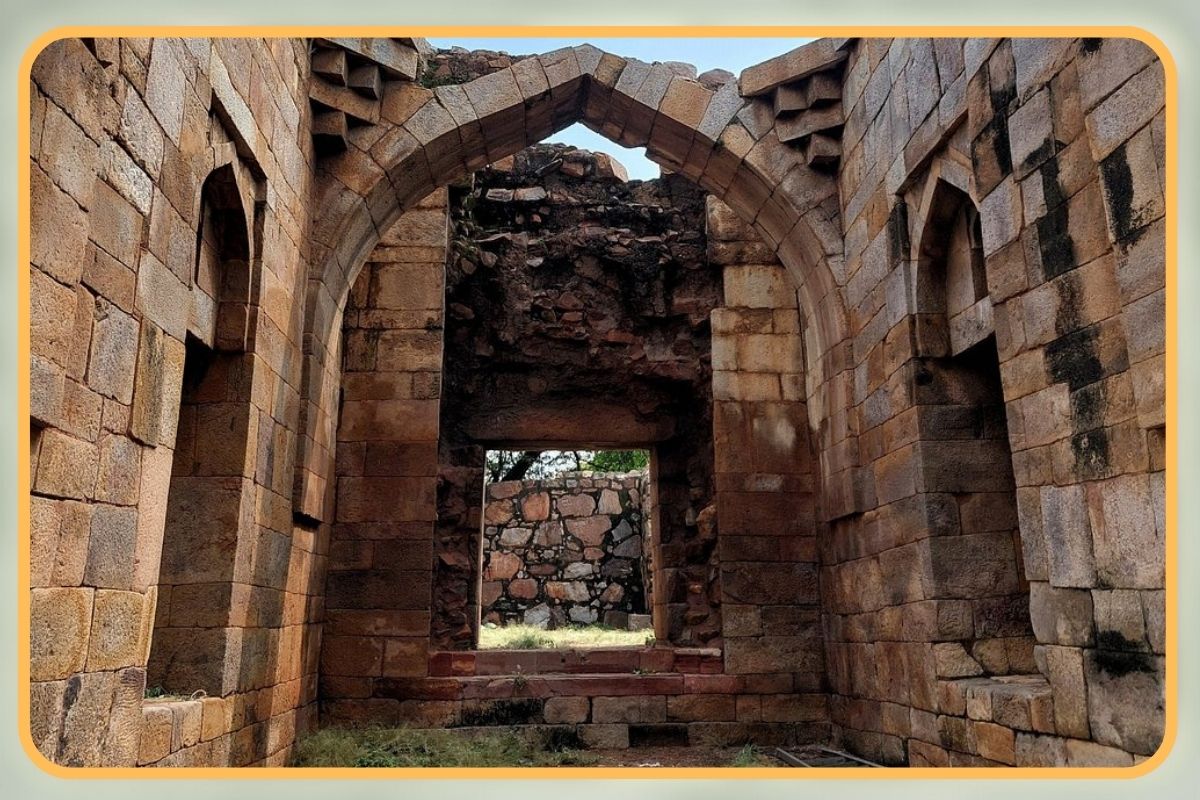
It does not manipulate emotions with dramatic architecture. It presents itself as a structure that has survived while greater monuments crumbled, that continues to teach while remaining silent. Every crack in the stone, every missing piece, every restoration mark tells part of a longer story about how societies remember their past.
What remains after ambition fades? For Alauddin Khilji, it is this modest collection of limestone walls in a corner of the Qutb Complex, visited by people who may know nothing about medieval sultanates but sense that something significant happened here. The tomb connects modern India to its complex, layered past, reminding us that history is not just dates and dynasties, but stone that endures, a sky that watches, and a memory that refuses to disappear completely.
Also Read: Dark History of Khooni Darwaza: Delhi’s Blood-Stained Gateway
You can connect with DNN24 on Facebook, Twitter, and Instagram and subscribe to our YouTube channel.

